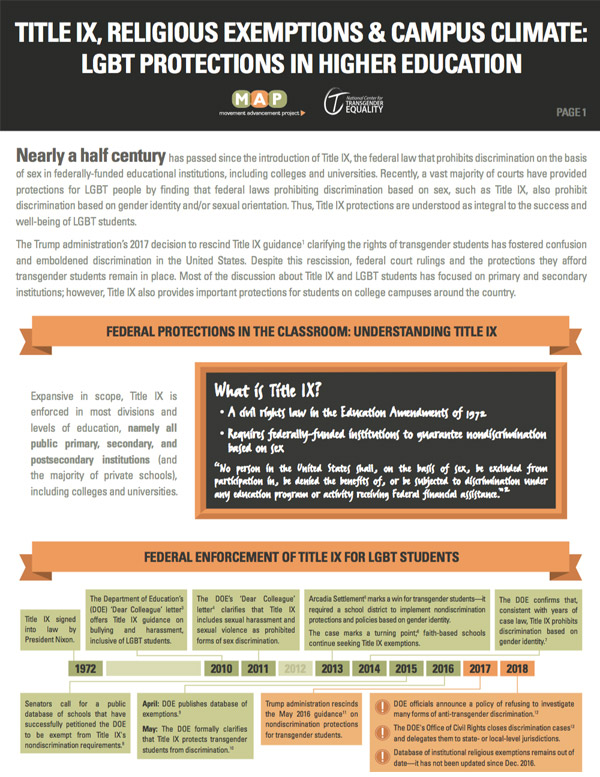The Bottom Line
Title IX, Religious Exemptions and Campus Climate: LGBT Protections in Higher Education, shows how the expansion of the ability of colleges and universities to claim a religious exemption to federal nondiscrimination laws can have a profoundly negative impact on LGBTQ students. These risks include threats of expulsion, increased disciplinary action simply for being LGBT, being denied participation in extracurricular activities, or forced into conversion therapy or counseling.
Title IX is a federal law that prohibits discrimination on the basis of sex in federally-funded educational institutions, including colleges and universities. For years, Title IX protections have been a critical protection for LGBTQ students—and not just for K-12 students.
Just like in K-12 schools, universities have a responsibility to ensure a safe campus environment for all students. It is crucial to foster inclusion and tolerance on campus so that LGBTQ students have the same chance as other students to pursue an education and be prepared to support themselves.
Title IX, Religious Exemptions and Campus Climate: LGBT Protections in Higher EducationDownload
Recommended citation:
Movement Advancement Project. October 2018.
Title IX, Religious Exemptions and Campus Climate: LGBT Protections in Higher Education. www.lgbtmap.org/Title-IX-Religious-Exemptions-Higher-Education (date of access).


